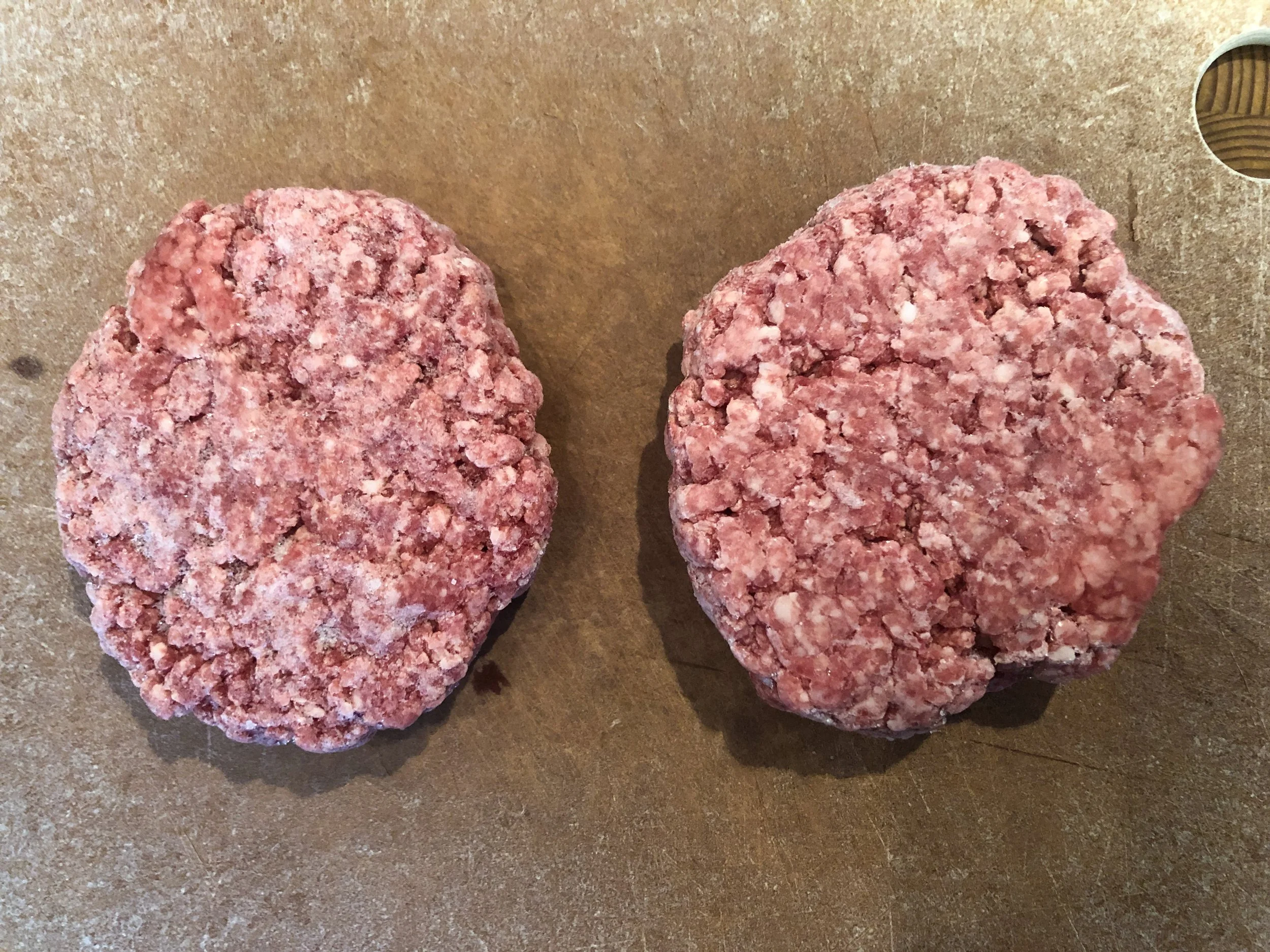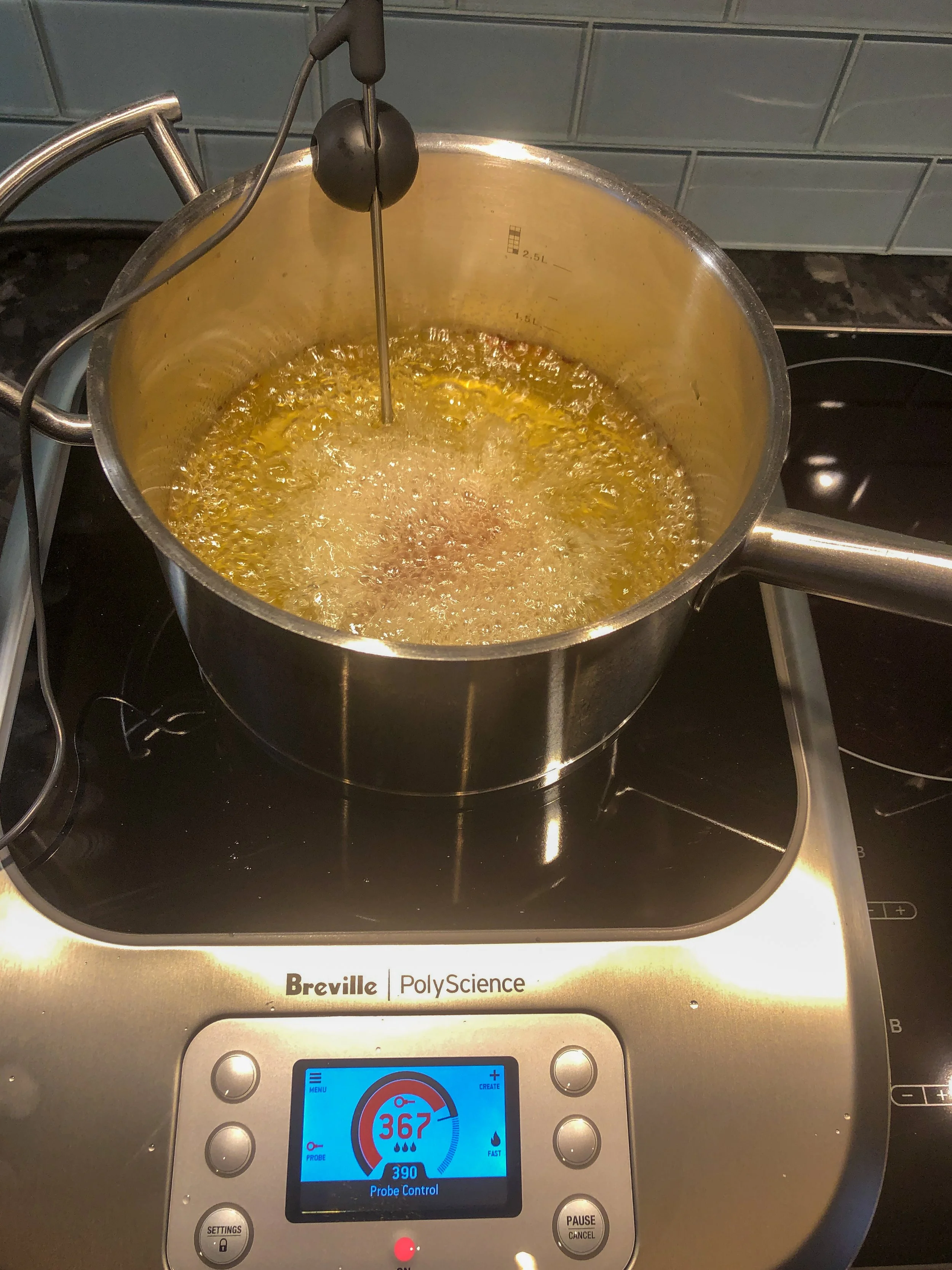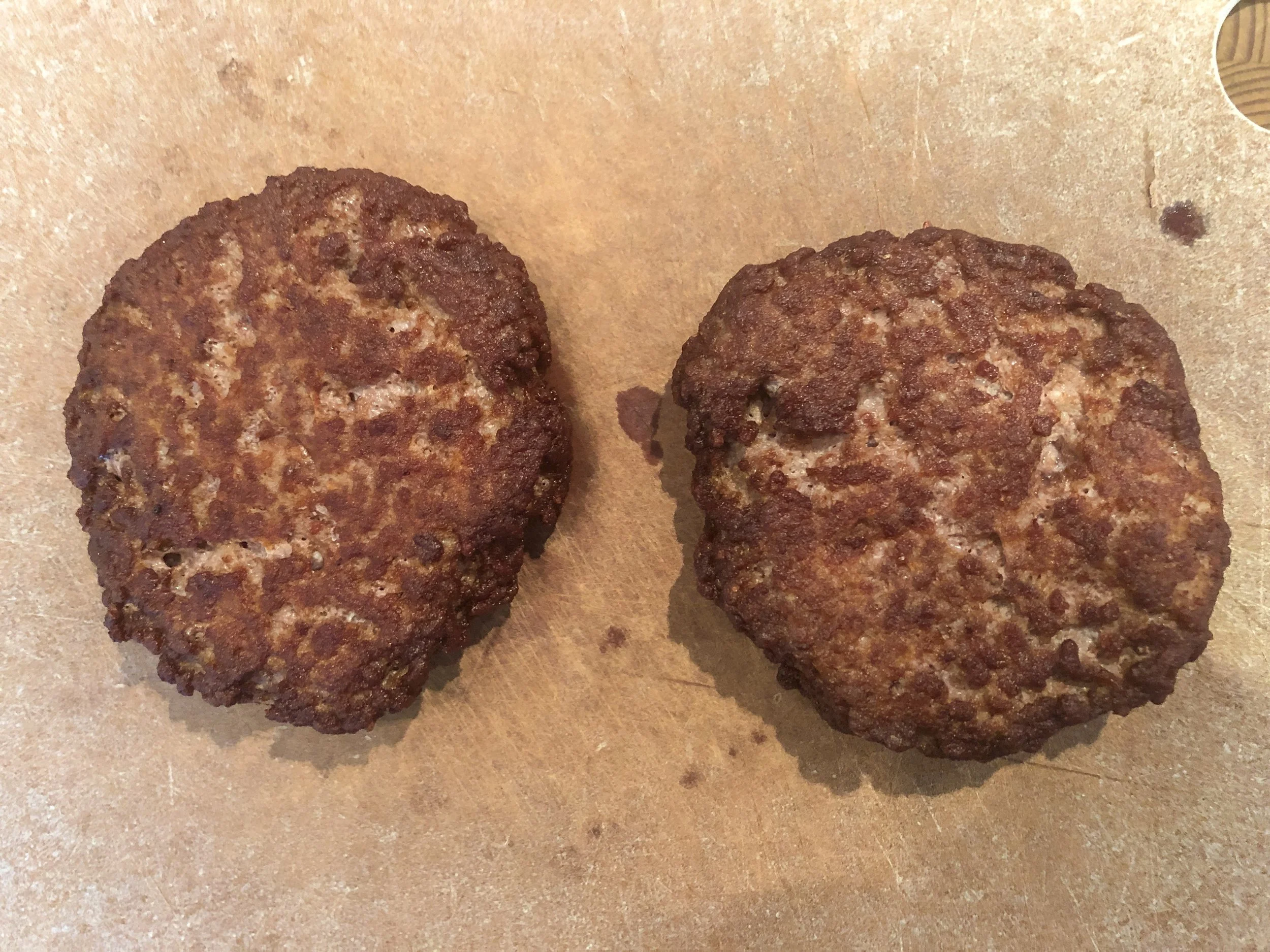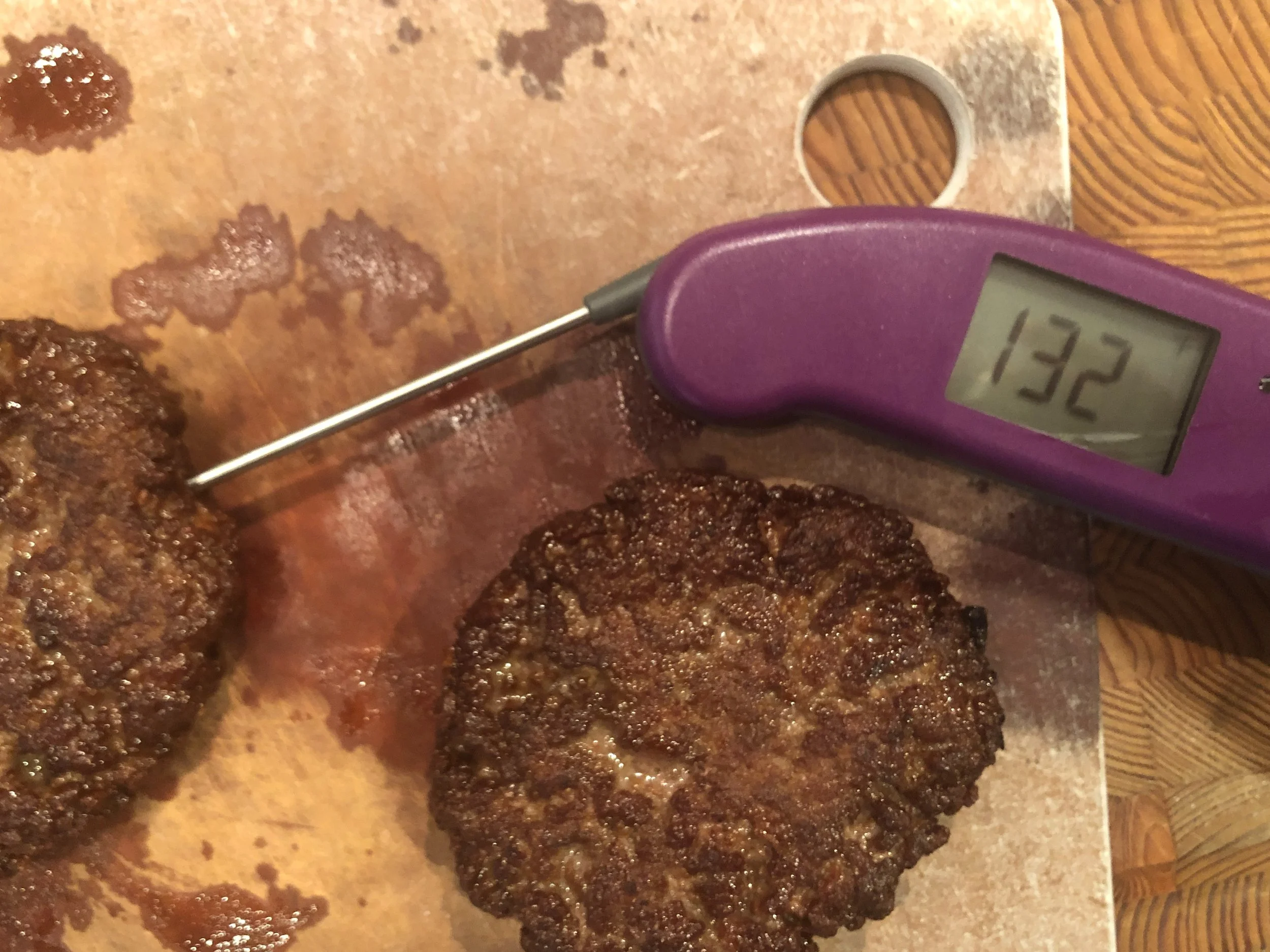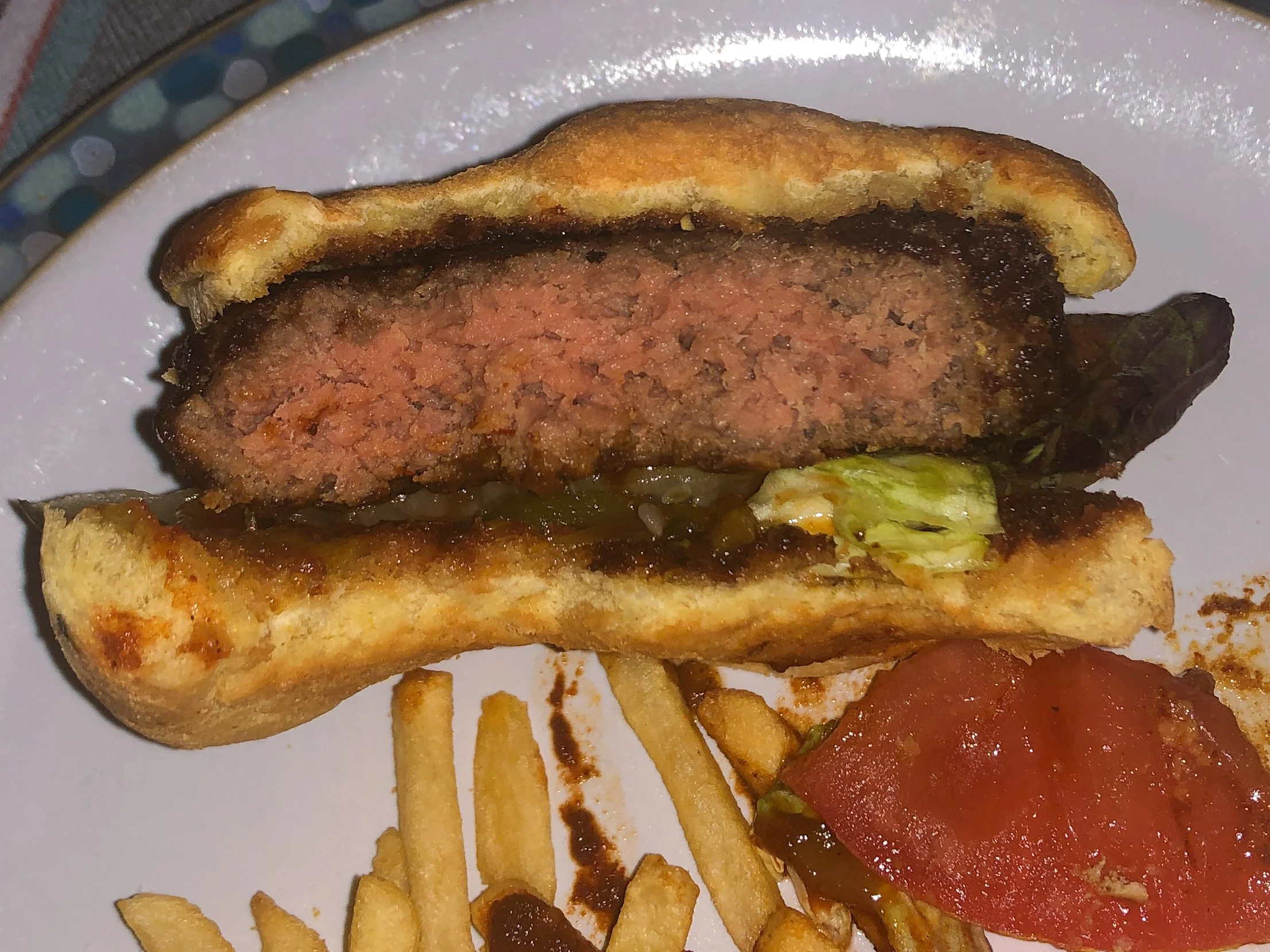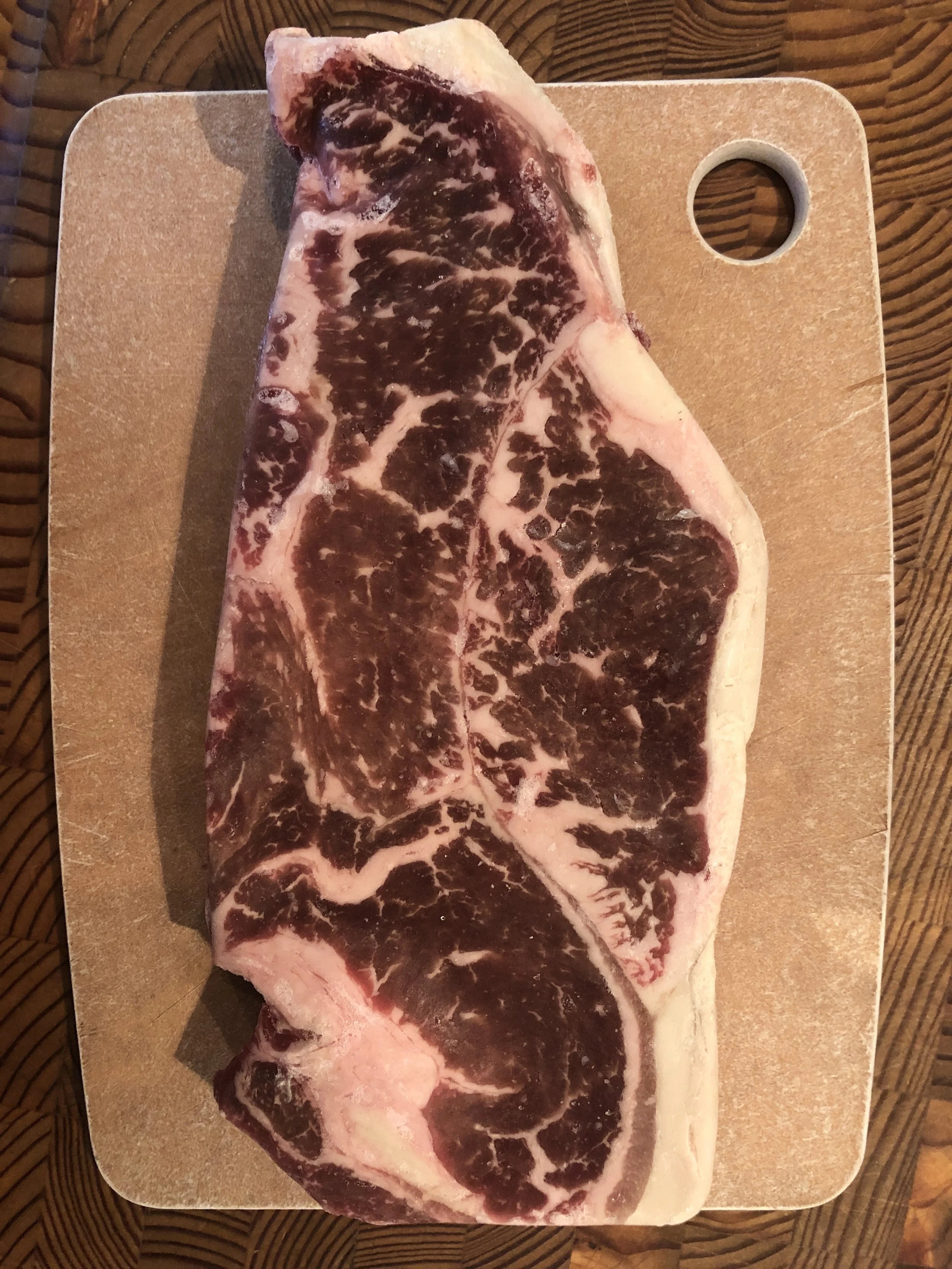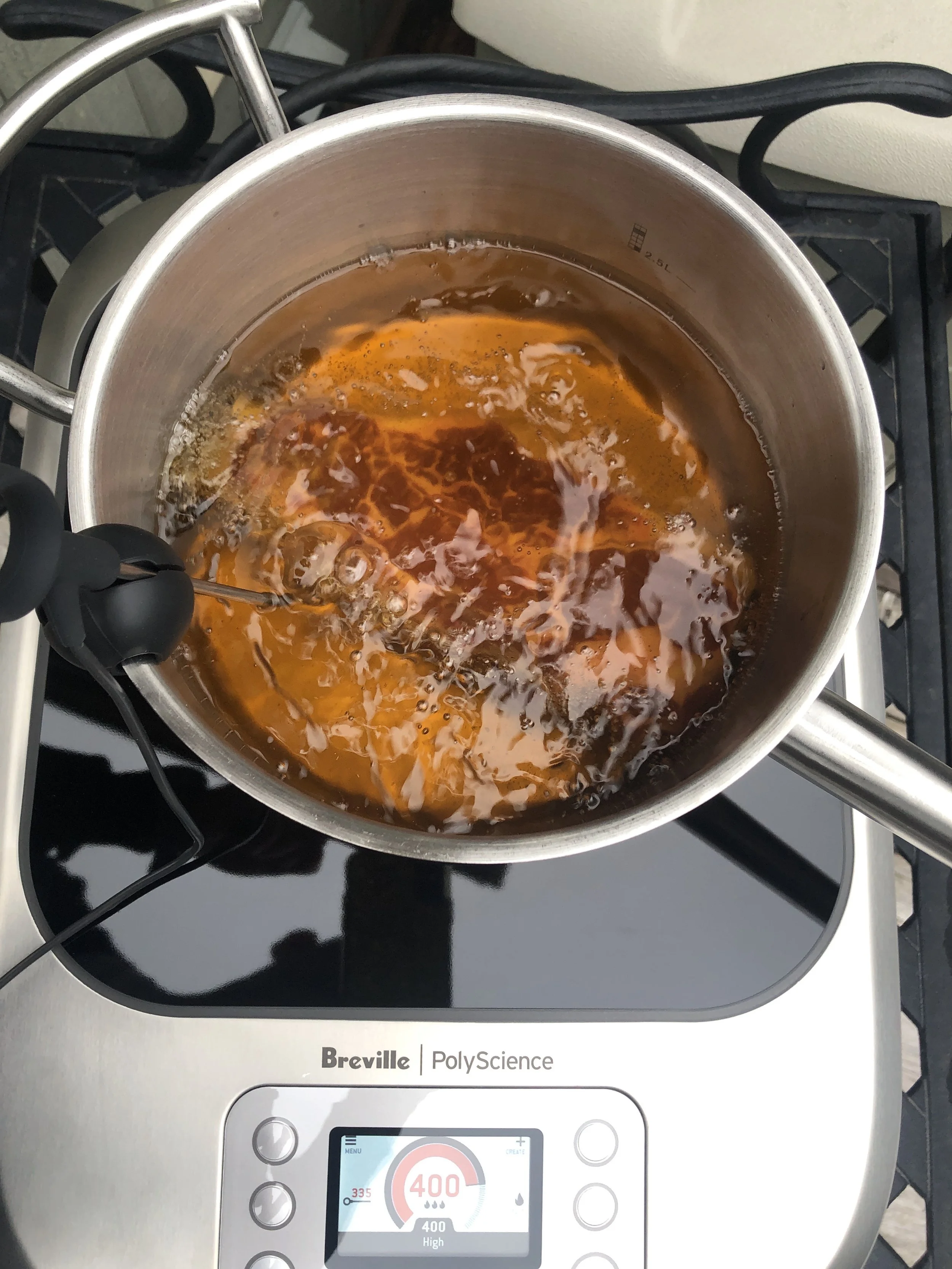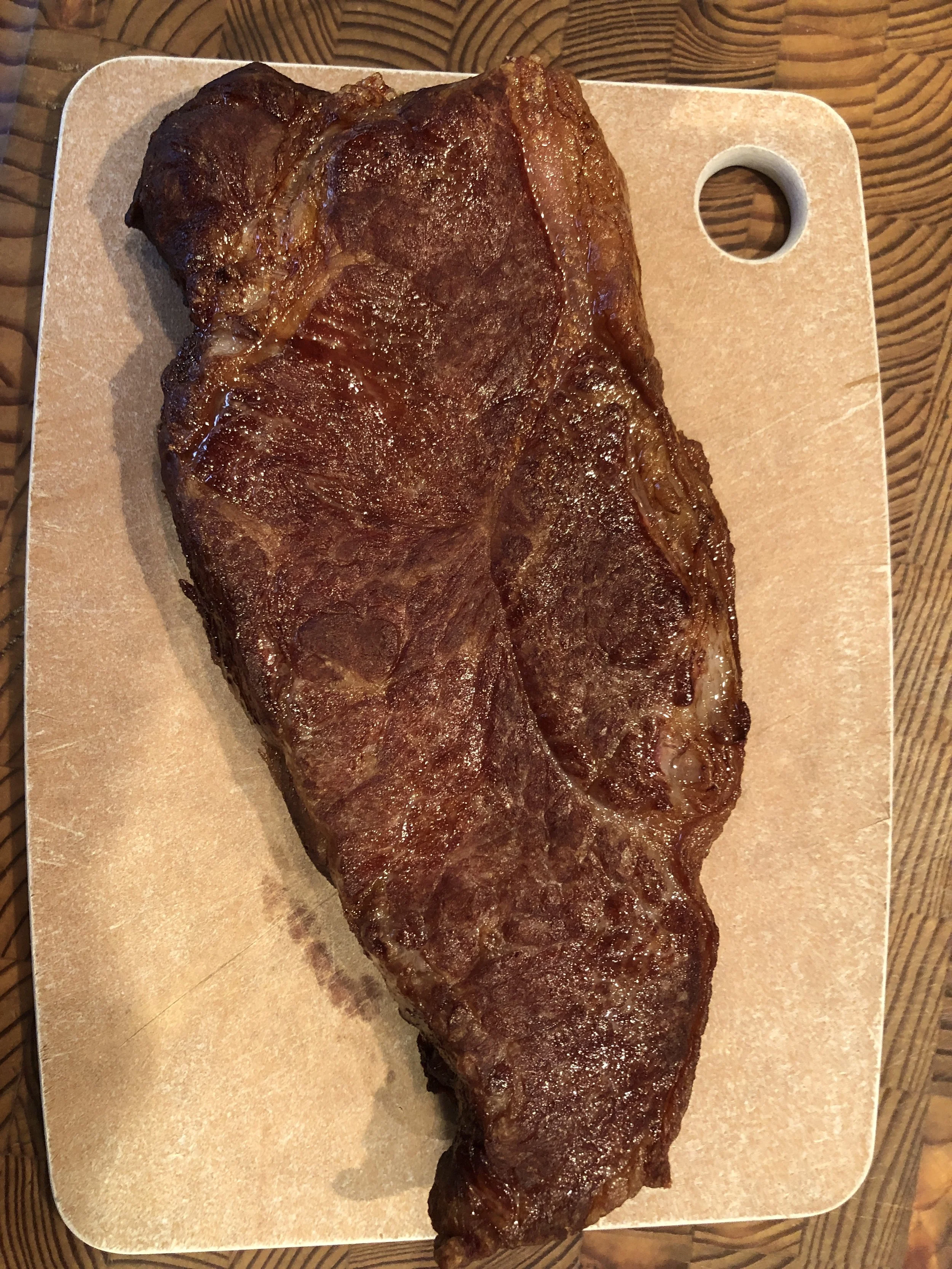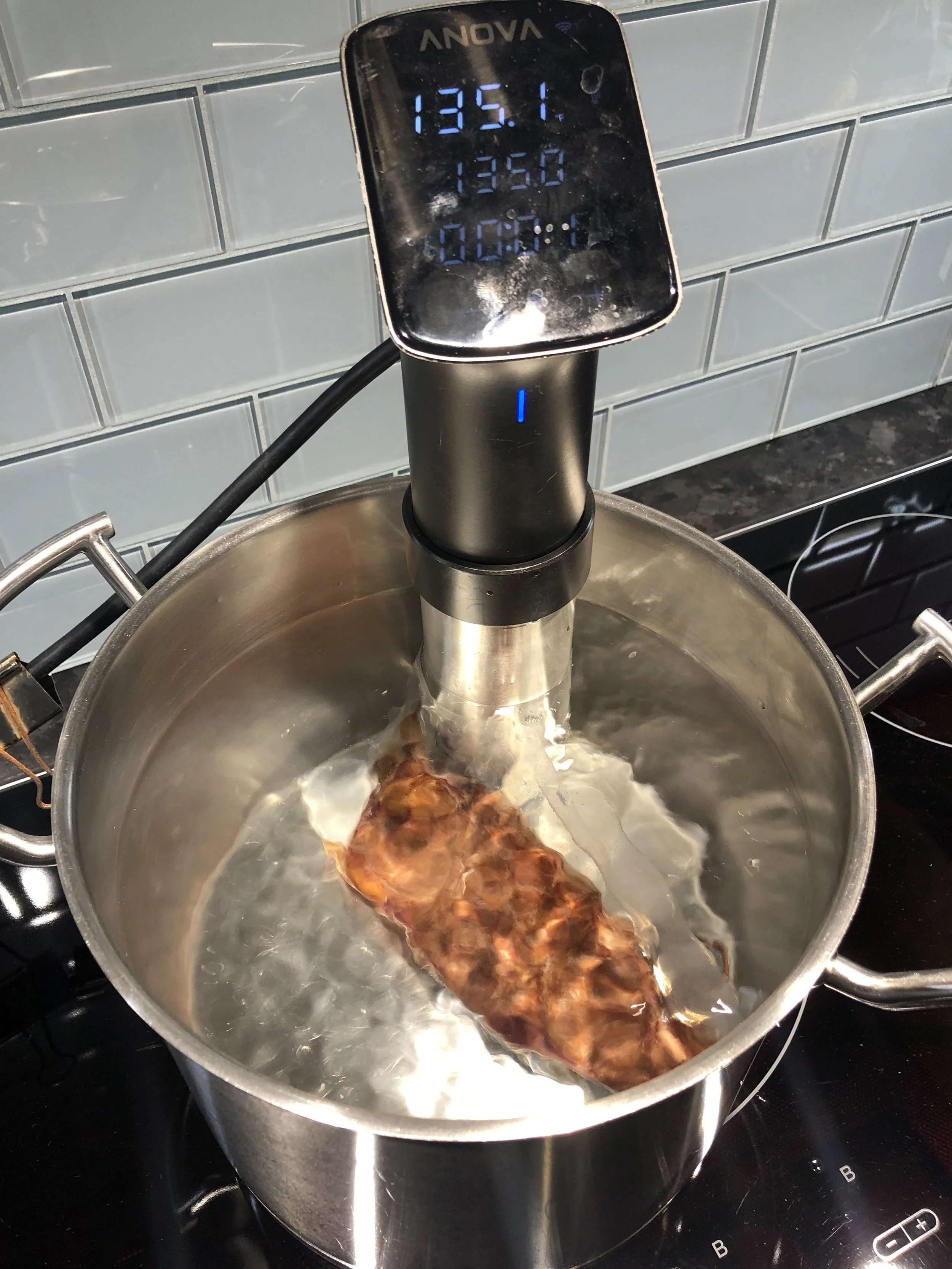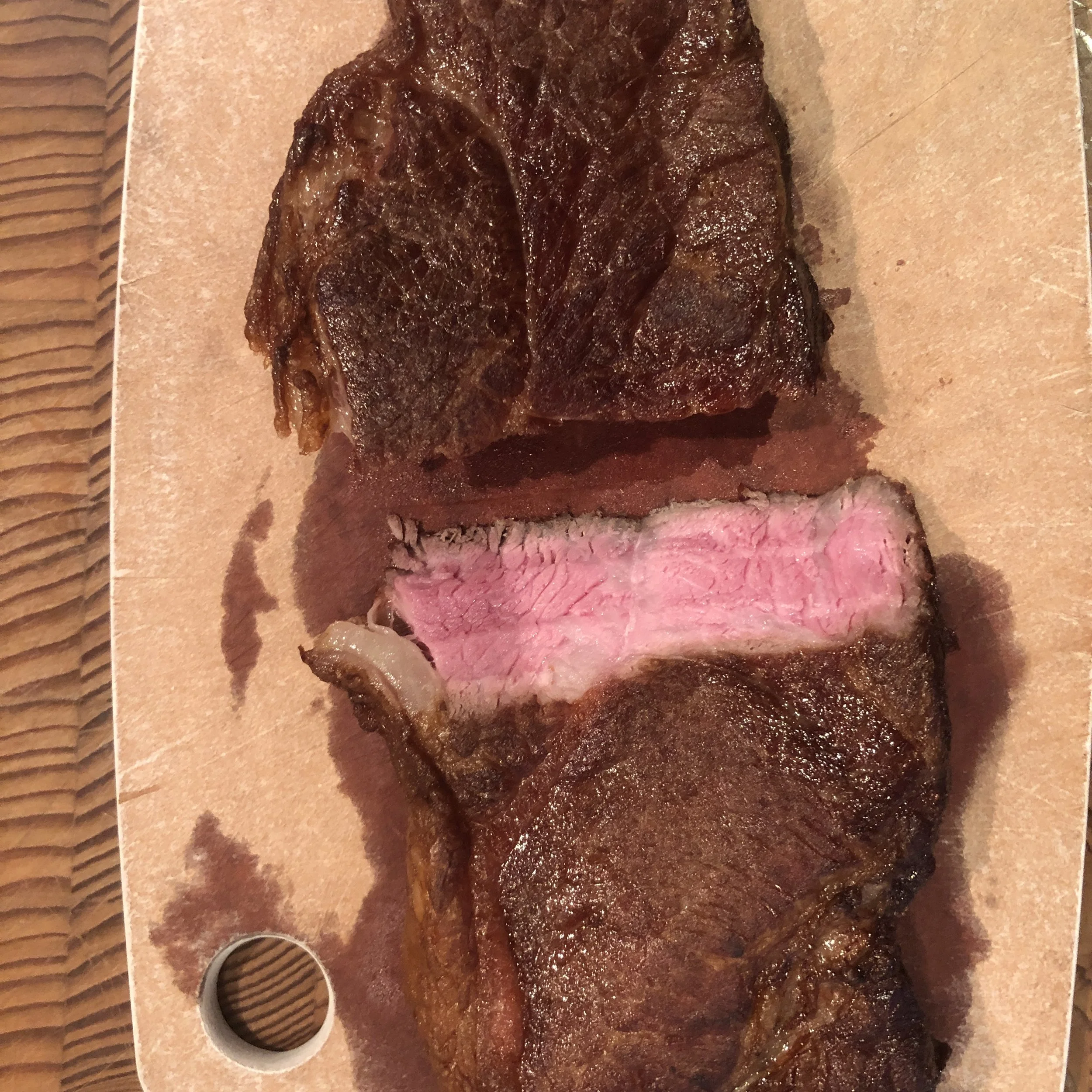Cryosear Hamburger V2.0
Previously I wrote of my experience making the “perfect” hamburger utilizing a technique developed in 2011 by Nathan Myhrvold and his team at Modernist Cuisine to address the difficulty of cooking a hamburger with its irregular and uneven surface. Cooking a burger traditionally results either in overcooking the ridges to reach the crevices or, undercooking the crevices so as not to overcook the ridges. So how to perfectly cook the inside but at the same time create a beautiful evenly seared crust?
Nathan Myhrvold at Modernist Cuisine tackled the problem this way: cook the burger sous vide to a perfect medium rare, briefly dip the burger in Liquid Nitrogen (LN2) to freeze a thin layer around the burger, and then deep fry the burger. LN2 is so cold at -196°C / -321°F, a quick dip freezes the outside before it has a chance to cool the inside. The frozen outside protects the inside when deep frying so the inside doesn’t overcook. Because the hot oil is able to penetrate all the nooks and crannies, you end up with a beautiful Maillard crust while preserving the perfectly cooked inside!
Later in 2015, Aki Kamozawa and Alex Talbot of the website Ideas in Food wrote an article in bon appétit entitled Slow-Roasted Twice-Fried Porterhouse describing how to perfectly cook a 2-inch thick porterhouse steak. Instead of freezing just the surface of the meat with LN2, they used the simpler more home friendly technique of freezing the entire steak in the freezer.
For their method, raw steak is first frozen, then deep fried to create a Maillard crust. As the steak is frozen, only the surface cooks as the steak’s interior remains frozen. (See ** below for the scientific explanation as to why this works.) The steak is pulled from the oil before the centre of the steak cooks and finished sous vide resulting in a steak that is perfectly cooked from edge to edge. To finish, because sous vide results in a wet surface, it needs to be re-seared in oil to re-crisp the surface. However, as it has been pre-seared in oil and the interior cooked throughout by sous vide, it only needs a quick fry such that the meat stays perfectly cooked edge to edge.
I only recently became aware of this technique by chance while scrolling through Chris Young’s YouTube channel and coming across this TikTock video he posted on cooking the perfect steak by cryo-searing.
Chris Young video showing how to cryo sear steak.
It occurred to me that if you can cryo-sear a steak without liquid nitrogen, why not a hamburger? I thought of this because over the winter I really wanted a hamburger, but grilling outside wasn’t an option as you can see below due to snow!
As I already had some preformed vacuum packed dry aged burgers in the freezer, why not try cryo-searing them using the fully frozen steak method. Below are fully frozen hamburgers just as they were removed from my freezer set to -18°C / 0°F.
Frozen burgers made with dry-aged beef trimmings
As the steak technique calls for frying at a temperature between 350-375°F / 177-190°C, I heated up some canola oil, a neutral oil with a high smoke point, to 390 F° knowing that the temperature would drop when the frozen burgers were added. To avoid the oil boiling over, I used a deep pot and carefully lowered the frozen burgers into the oil.
Note that although the probe temperature was set to 390°F, when the frozen burgers were added, the actual oil temperature dropped to 367°F, but still within the desired cooking range of 350-375°F.
Below are the burgers after the first sear with a nice Maillard crust, and as you can see, although the surface is cooked, the interior temperature remains near frozen at 33°F.
First fry resulting in a nicely cooked surface.
Despite submerging the frozen burger in hot oil long enough to create a beautiful crust, the inside of the burger remains near frozen at 33°F!
After the initial cryo-sear, the burgers were placed in a ziploc bag and cooked in a sous vide water bath set to 135°F / 57°C for 90 minutes to finish cooking them. They were then very briefly re-seared in oil. As you can see, the burgers have developed even more of a Maillard crust, yet the internal temperature remains close to 135°F / 57°C having dropped slightly due to sitting at room temperature ever so briefly while I set up the photo.
Lovely crust but perfectly cooked interior
End result: a nicely cooked hamburger!
The final result was a burger with an evenly cooked Maillard crust which contrasted beautifully with the perfectly cooked medium-rare interior. And it goes with out saying, it was delicious.
The question is of course was it worth the effort. Well, given the alternative of shovelling the deck and braving the elements to grill a burger, yes it was. However, were it not for that, I am perfectly happy with a grilled burger, even if it isn’t in the eyes of the team at Modernist Cuisine a “perfect” hamburger. Having said that, I look forward to this weekend to try this technique as it was originally described, with a nice thick frozen steak!
** Why can you deep fry something frozen without cooking the inside? The answer is because of the the high latent heat of water, and meat like most foods, is mainly water. Muscle, i.e. meat, is approximately 75% water (although different cuts may have more or less water), 20% protein, and the remaining 5% a combination of fat, carbohydrate, and minerals.
So what is latent heat and what does that have to do with cooking frozen food? Water molecules (H₂O) are polar, meaning they have a slight positive charge on the hydrogen atoms and a slight negative charge on the oxygen atom. This polarity results in water molecules forming hydrogen bonds, which are relatively strong intermolecular forces in which the positive end of one water molecule is attracted to the negative end of another. Basically water molecules are little magnets, the opposite ends of which are attracted to each other.
When heat is added to a solid substance at its melting point, which for frozen water is 32°F / 0°C, the energy has to first overcome these intermolecular forces holding the solid molecules together before it can increase the temperature. This energy is called latent heat, and it's "hidden" because it doesn't cause a temperature change.
In the case of a frozen steak or hamburger, the temperature can not go above the freezing point of water and cook the meat, until all of the meat’s water has melted. When the meat is deep fried, its surface water melts quickly and cooks, while beneath the surface the water is still melting and doesn’t cook. This means you can blast the surface creating a beautiful Maillard crust without fear of overcooking the meat underneath.
Addendum: Cryo-steak
As noted above, I wanted to try this technique as originally described with steak which I did tonight. I started with a frozen New York strip I had in the freezer. This was deep fried at 375°F / 190°C and then cooked sous vide at 135°F / 57°C for 90 minutes.
Lastly, the steak was refreshed by a brief 15 second deep fry resulting in a medium-rare steak and nice Maillard crust.
Medium-rare with nice Maillard crust.
The result was a nicely cooked steak, but were I to do it again, I would not use a plain frozen steak. Rather, because on this first attempt my steak was under-seasoned, I would take a fresh steak and do a long dry brine (1% salt by weight for a minimum 4 hours), before freezing it. Also, I would use a much thicker steak to ensure the inside doesn’t overcook with first fry. Lastly, it might be interest to try a more flavourful oil to cook it in, maybe beef tallow?


